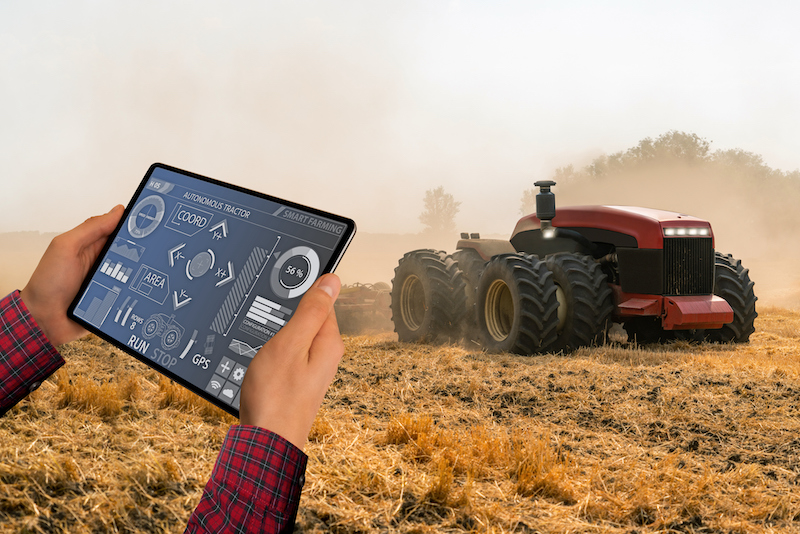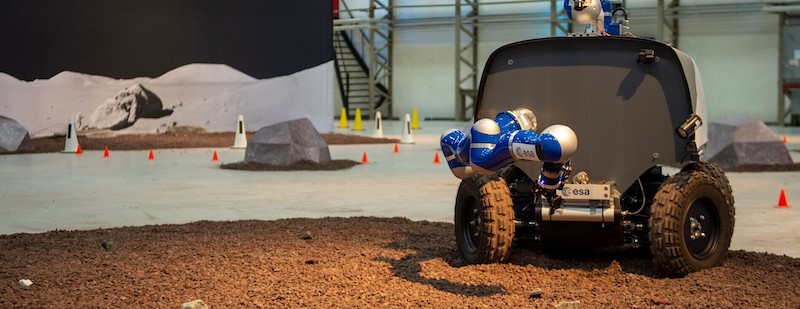
RTI releases ‘first’ software framework for widely distributed autonomous systems
Real-Time Innovations, a software framework company for autonomous systems, has released the latest version of its software framework, RTI Connext.
RTI says Connext 6.1 is “the first software framework designed to address the development and deployment challenges faced by companies building remotely-operated autonomous systems”.
Autonomous systems must operate in inaccessible, remote, or hazardous environments.
Examples include underwater drones, remotely-accessible medical devices, space systems, and construction and mining robots. Since artificial intelligence cannot handle all situations, these applications must use remote operators to supervise and intervene in difficult scenarios.
Connectivity for distributed control is extremely challenging. Applications require high reliability and real-time performance even though connectivity in these inhospitable environments is often unreliable and low bandwidth.

Depending on the operator’s proximity, communication may also span local, wide area, public and private networks.
Connext 6.1 introduces features to enable easy real-time remote operation over any network. For instance, if the network connection changes as the system moves, connectivity is seamless without reconnecting, secure without renegotiating, and reliable without losing information. Remote operations can continue in real time without interruption.
Enterprise networking assumes reliable, stable connections and latency insensitivity.
Unlike other distributed software frameworks for the enterprise, Connext 6.1 supports and optimizes fast communications across highly variable local (LAN) and wide-area networks (WAN).
Moreover, Connext 6.1 does not require software changes to support diverse network types.
Its Application Programming Interfaces (API) abstracts the underlying networks, allowing developers to target any environment. Connext 6.1 offers the first practical design for control of remote autonomous systems.
Anthony Reid, director of platforms and applications at Komatsu, says: “To empower innovation and accelerate value delivery to our global customers, we are developing a mining technology ecosystem supported by a platform on RTI Connext DDS.
“With RTI Connext DDS, we’re able to connect data from all different types of machines, mining processes, systems, and third-party applications while leveraging edge and cloud computing to enable interoperability, autonomy, and optimization.
“The Real-Time WAN Transport and Cloud Discovery Service in Connext 6.1 help us to overcome technical hurdles while simplifying our software architecture.”
Connect geographically-distributed systems
New capabilities in Connext 6.1 that ease the development and deployment of geographically distributed systems include:
- Real-Time WAN Transport provides reliable, low latency and secure communication over lossy, low bandwidth, and public networks. It supports Network Address Translation (NAT) traversal and mobile applications with changing Internet addresses.
- Cloud Discovery Service simplifies deployment of dynamic systems in which applications, assets, and their network addresses may not be known at configuration time. It provides a means for applications to discover each other and directly communicate, peer-to-peer. This minimizes latency and maximizes throughput. It is far superior to traditional centralized broker solutions.
- Built-in data compression improves efficiency over bandwidth-constrained networks. Compression maximizes bandwidth use, lowering overhead and latency while increasing throughput. A choice of compression algorithms and levels allows optimization of processor versus network utilization for different payload types.
Charles Cross, co-founder and CTO at Mission Robotics, says: “The WAN Transport feature is one of the fastest and easiest ways to achieve peer-to-peer UDP WAN communication, especially for projects already using RTI Connext DDS, but also for those using other middleware or even starting from scratch.
“At Mission Robotics, we were able to create a proof of concept from scratch that allowed us to remotely control and monitor a robot over the internet in only three hours. Considering the time and resources that would have gone into this effort otherwise, this is an absolute game changer.”
Dr Thomas Krueger, human robot interaction laboratory, European Space Agency, says: “Space exploration opens new domains in science and technology, often leading the way for earthbound advances. For example, robots are essential for exploration, and will be used for complex operations such as building and maintaining infrastructure in space.
“Although autonomy is developing quickly, it’s not enough alone. These systems must combine human and machine intelligence. That allows robots to act as ‘avatars’ for the human: the humans handle direction and complex situations, but the robots are smart enough to carry out the actual operation.
“This type of cooperative remote guidance is critical for all intelligent systems, including those on earth. It’s not simple; guiding a semi-autonomous system from a distance over an unreliable network doesn’t work with enterprise networking technologies.
“RTI Connext 6.1, with the new Real-Time WAN transport, optimizes speed and repairs lost packets, letting us reliably control our system from orbit despite the inherent latencies.
“RTW will enable connected transportation and other autonomous systems to function. It is fundamental for efficient, scalable, and secure teleoperation.”
Efficiently develop large-scale and heterogeneous systems
In addition to its support for complex networking environments, new features in Connext 6.1 facilitate the development of any large-scale and heterogeneous distributed system.
Support for .NET Core 5 lets developers use C# and run their applications on any platform that supports .NET Standard 2.0. In addition to Windows, this includes Linux, macOS and the Unity game engine.
A new System Designer tool provides a graphical way to easily and intuitively specify the configuration and interfaces in a Connext-based system. This helps ensure that applications adhere to a common architecture and can interoperate in a plug-and-play manner.
Administration Console includes enhanced graphical views to make it easier to visualize the components of live large-scale systems and their interconnectivity.
This allows OEMs and systems integrators to better observe behavior during test and deployment, and to more quickly identify configuration or network problems.
David Barnett, vice president of products and markets at RTI, says: “Innovations in autonomy are accelerating at an unparalleled pace. As systems become more connected, intelligent and mobile, the challenges surrounding development and security remain highly complex.
“RTI has always been dedicated to helping our customers solve the unique obstacles that go along with developing autonomous systems, and with the latest update to our Connext product, we are proud to provide our customers with the foundational software for their remotely-operated autonomous systems.
“From mission-critical medical devices to underwater drones and mining robots, it is our customers’ cutting-edge technology that is going to change the world for the better. We are honored to be a part of the journey.”
